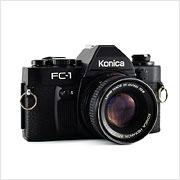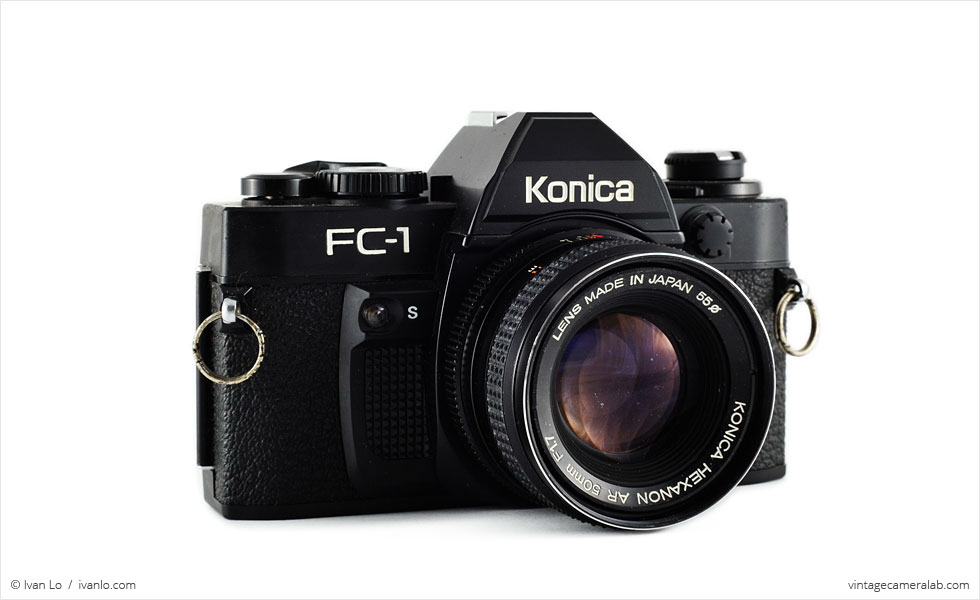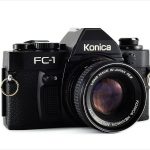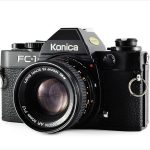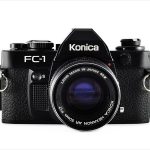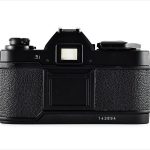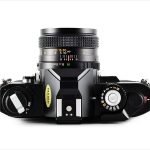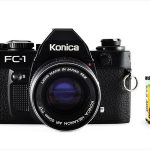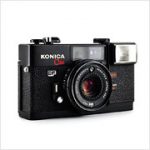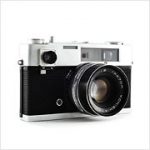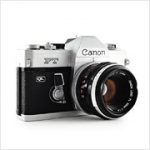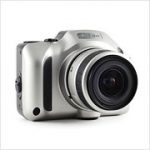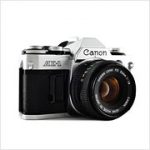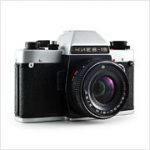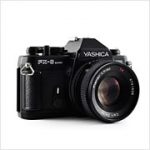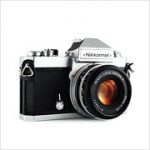Konica FC-1 Specifications
| Manufacturer: | Konishiroku Shashin Kogyo K.K. |
| Origin: | Japan |
| Made in: | Japan |
| Introduced: | 1980 |
| Type: | Single Lens Reflex |
| Lens Mount: | Konica AR-Mount |
| Format: | 135 Film |
| Dimensions: | 14.6 x 9 x 5.7 cm (body only) |
| 14.6 x 9 x 8.8 cm (with lens) |
Konica FC-1 Overview
The Konica FC-1 is the motorless sibling to the FS-1, the very first 35mm SLR to feature a built-in motor drive. The FC-1 belongs to Konica’s second attempt at an SLR system which was based around the AR lens mount and continued until the company ceased production of SLRs entirely in 1987.
Perhaps one of the best selling points for the entry-level FC-1 (besides the lineup of razor-sharp Hexanon lenses) is its relatively foolproof film loading procedure. Instead of inserting the film leader into a tiny slot in the uptake spool, ham-fisted photographers only need to hook it onto the advance sprocket before closing the back. Another major selling point is its shutter-priority auto-exposure and electronically controlled shutter although this means that the FC-1 cannot function at all without batteries.
Once film is loaded, the film speed can be selected by turning the dial underneath the film rewinder. Aperture and focus are adjusted on the lens while shutter speeds ranging from two to 1/1000 seconds and Bulb are set via the dial surrounding the silver shutter button and adjacent to the film advance lever. The self-timer can be found on the front of the camera, a clear button marked “S” that doubles as the flashing indicator for the countdown sequence. Besides lenses, the FC-1 and its siblings also accept a variety of accessories including eyepieces, motor drives, remote shutter release cables that plug into the accessory port on the front plate of the camera, and external flash units that hook up to the camera either via the hot shoe or the flash sync terminal underneath the film winder.
My father bought this Konica FC-1 at a garage sale sometime in the late 1980s for enough money to make my mother angry with him. The story goes that even though my parents argued over this camera, my dad has actually never used it. Twenty-some years after he bought it, he gave it to me and it sat unused in my collection for about five years until I pulled it up again. After I bought my Sony NEX-5N, I decided to take advantage of the Hexanon lens and bought a mount adapter. The Hexanon is extremely sharp and was my go-to manual focus 50mm lens until I acquired a Carl Zeiss 50mm f/1.7 Planar.
Find your very own Konica FC-1 on eBay.
McKeown, James M. and Joan C. McKeown’s Price Guide to Antique and Classic Cameras, 2001-2002. (Grantsburg, WI, USA: Centennial Photo Service, 2001), p 382.
“Konica FC-1,” Camerapedia, http://camerapedia.wikia.com/wiki/Konica_FC-1
